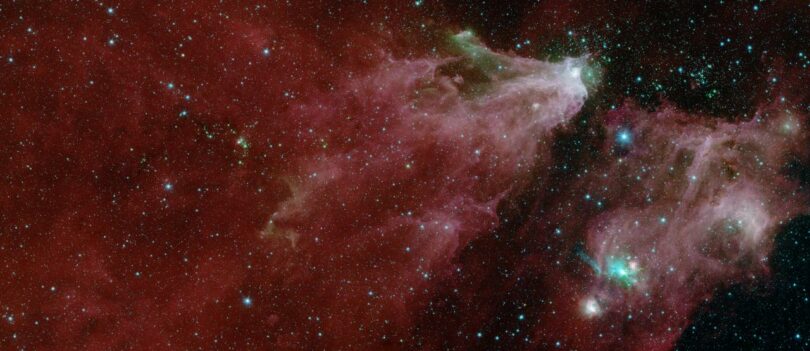In the boundless expanse of the night sky, we find a tapestry of stories written in stars. Among these celestial narratives, the constellation Cepheus stands out with a regal legacy that has captivated our ancestors for millennia. Named after the mythical king of Aethiopia, Cepheus carries with it the tales of royalty and the eternal dance of the cosmos.
As we gaze upwards, we embrace a tradition that unites us with bygone civilizations who also sought to comprehend the grandeur of our universe. Cepheus represents not just a collection of stars but also an enduring symbol of leadership and power. Through the ages, this constellation has maintained its position in the sky, reminding us of the constancy amidst our ever-changing world.
Our understanding of Cepheus has evolved significantly since it was first mapped by the Greek astronomer Ptolemy. Today, we explore this constellation not just for its historical and cultural significance, but also for the astronomical treasures it holds. From variable stars that pulsate over days and months to distant galaxies, Cepheus is a cosmic realm teeming with wonders waiting to be explored by us, together.
Exploring Cepheus
In our exploration of Cepheus, we uncover both the fascinating stories woven into the constellations and the impressive characteristics of its celestial bodies.
Mythology and Lore
Cepheus is named after the mythical king of Ethiopia, the husband of Cassiopeia and father to Andromeda, all of whom star in their respective constellations. The story that accompanies these stars captures a tale of sacrifice, heroism, and the ancient belief in the divine influence of the heavens on earthly destiny.
Stellar Attributes
Cepheus is not just rich in stories; it’s also home to an array of stellar phenomena. Key stars like Alpha Cephei, known as Alderamin, make this constellation a subject of interest for astronomers. Below is a succinct overview of Cepheus’s engagement in the cosmic theater:
-
Alderamin (Alpha Cephei)
Type: White main-sequence star
Magnitude: 2.5143
Distance from Earth: About 49 light-years -
Beta Cephei
Type: Triple star system
Magnitude: Ranges from 3.15 to 3.21
Notable: This system includes a variable star that pulsates, leading to changes in brightness over short periods. -
Gamma Cephei
Type: Binary star system
Note: It hosts an exoplanet, making it a point of interest for studies on planetary systems beyond our solar system.
Stars in Cepheus exhibit a wide array of characteristics, from varying brightness to the presence of planetary systems, underscoring the constellation’s prominence in our night sky and its importance in astrophysical research.
Cepheus in Astronomy
In the expansive tapestry of the night sky, we find Cepheus, a constellation named after a mythological king.
This celestial feature guides astronomers and stargazers through the stories written in the stars.
Star Mapping
Cepheus is located in the northern sky and is visible at latitudes between +90° and -10°. It is particularly prominent during the autumn months in the Northern Hemisphere. Here is how we can map it:
- Right Ascension: 20 hours
- Declination: +70 degrees
- Quadrant: NQ4
- Area: 588 square degrees
- Surrounding Constellations: Draco, Ursa Minor, Cassiopeia.
Notable Stars
Cepheus hosts several notable stars that contribute to its shape and story:
- Alderamin (α Cephei): The brightest star in Cepheus, Alderamin is about 49 light-years away and has a magnitude of 2.5.
- Errai (γ Cephei): A binary star system with notable planetary companions. It’s approximately 45 light-years from us.
The stars of Cepheus span a range of magnitudes and distances, revealing a variety of stellar phenomena.
Deep Sky Objects
Our constellation is home to a collection of deep-sky objects that captivate us with their distant beauty:
- The Fireworks Galaxy (NGC 6946): A spiral galaxy decorated with frequent supernovae.
- The Iris Nebula (NGC 7023): A bright reflection nebula, resembling the iris of an eye, surrounding a young, hot star.
- The Garnet Star (μ Cephei): One of the largest and most luminous stars known, this red supergiant is often referred to as Herschel’s “Garnet Star” for its deep red coloration.
Our exploration of Cepheus reveals a kingdom of celestial wonders, each telling its own cosmic tale.
Cepheus Across Cultures
In exploring the constellation Cepheus, we uncover rich narratives that span across ancient civilizations and find their roots in the stars.
Ancient Interpretations
The constellation Cepheus represents a king in a celestial myth, etched in the night sky with stars as its kingdom’s boundary markers. Ancient Greeks portrayed Cepheus as a figure of royalty, connected to the myth of Andromeda, where he was her father.
-
Babylonian: Identified as the “King”, linked to their leader.
-
Egyptian: Envisioned as “As-Sah”, or the “Swineherd”, holding its unique place in their star charts.
Through these cultures, Cepheus was seen not just as a cluster of stars, but a window into understanding the cosmos and its relation to leadership and mythology.
Modern Symbolism
In contemporary times, Cepheus embodies more than myth; it’s a scientific milestone and a connection to our historical past.
-
Astronomy: Cepheus serves as a guidepost for stellar studies, hosting fascinating objects like Garnet Star – a red supergiant.
-
Cultural Heritage: As one of the 88 modern constellations, Cepheus underscores our shared celestial heritage, inspiring us to ponder our remote ancestors’ reverence for the night sky.
Observing Cepheus
Cepheus is a constellation often glossed over, but for those of us who venture to observe it, it reveals stellar wonders and deep sky objects worth our gaze.
Amateur Observing Tips
We can easily locate Cepheus by finding its distinctive house-shaped pattern in the northern sky, close to Cassiopeia. Here are some pointers for us to keep in mind:
- Best Time to Observe: The best time for us to observe Cepheus is during the late summer and autumn months when it’s nearly overhead in the evening sky in the Northern Hemisphere.
- Finding Cepheus: Use the familiar ‘W’ shape of Cassiopeia to direct us to Cepheus, which lies just to the north.
- Equipment: A pair of binoculars will reveal some of Cepheus’s deep sky objects, like the clusters and nebulae. With a small telescope, we can see more details.
| Planets/Large Moons Visible | Best Month to Observe |
|---|---|
| None specific to Cepheus | August to November |
We should choose a clear night, free of light pollution, for the best stargazing experience.
Photography and Imaging
Capturing Cepheus can be a rewarding challenge. Here’s what we need for success:
- Camera: Start with a DSLR or a mirrorless camera capable of long exposures.
- Tripod: A sturdy tripod is crucial to avoid any movement during our exposures.
- Wide-Angle Lens: A wide-angle lens allows us to capture the vastness of the constellation and its surroundings.
To photograph Cepheus’s deep sky objects:
- Use a telescope with a good mount to track the stars as the Earth rotates.
- Equip our telescope with a camera adapter for deep sky astrophotography.
- Long exposure times will be necessary; we should experiment with settings to capture the faintest objects.
| Equipment Needed | Purpose |
|---|---|
| DSLR/Mirrorless Camera | Capture long exposures of the night sky |
| Telescope with mount | Detailed images of deep sky objects |
| Wide-Angle Lens | Photograph the constellation as a whole |
We should always take multiple exposures and use stacking software to enhance the final image quality.


